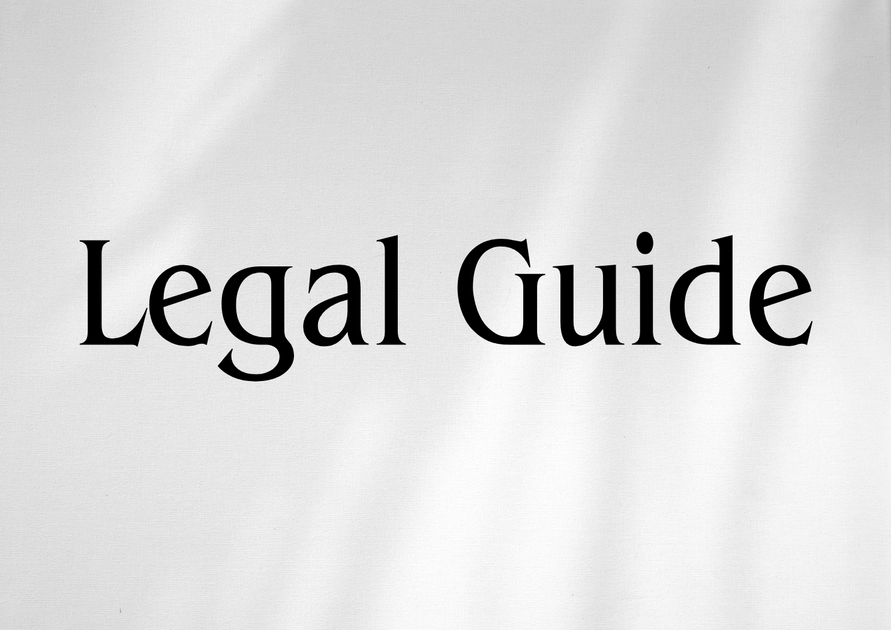Introduction: Understanding Aircraft Mortgages and Security Interests in Qatar
The global aviation sector is a dynamic engine of growth, and in the Middle East, it is particularly significant – with the UAE and Qatar both serving as influential aviation hubs. As cross-border investment, leasing, and financing of aircraft expand between GCC neighbours, understanding the legal frameworks that govern aircraft mortgages and security interests becomes crucial for UAE businesses, lenders, lessors, and legal advisors. This article provides a comprehensive legal analysis of the regulation of aircraft mortgages and security interests under Qatari law, and offers thorough guidance for UAE-based stakeholders who engage in aviation finance, lease structuring, or cross-border aircraft transactions, particularly in light of recent legal developments.
The importance of these issues is underscored by enhanced regulatory scrutiny, evolving legislative frameworks, and increased cross-border enforcement requirements. With 2025 bringing fresh legal updates and regional momentum around aircraft finance transparency, it’s essential to understand both technical compliance and practical risk management for activities that cross Qatari and UAE legal jurisdictions. This article synthesizes statutory references, benchmark practices, and actionable steps to support executives, legal managers, and compliance officers in the UAE’s aviation ecosystem.
Table of Contents
- Overview of Aircraft Mortgages and Security Interests in Qatar
- Legal Framework: Qatari Legislation and International Treaties
- Registration of Aircraft Mortgages in Qatar
- Comparative Overview: Qatari Law vs. UAE Law 2025 Updates
- Practical Application and Compliance Strategies
- Case Studies and Risk Scenarios
- Enforcement of Security Interests and Legal Remedies
- Key Risks and Challenges for UAE Stakeholders
- Best Practices and Strategic Recommendations
- Conclusion
Overview of Aircraft Mortgages and Security Interests in Qatar
Defining Aircraft Mortgages and Security Interests
An aircraft mortgage is a legal mechanism that provides a lender or financier with a security interest over an aircraft. It ensures that in case of borrower default, the secured party has recourse to the aircraft as collateral. Security interests, in a broader sense, cover any right or legal claim a creditor enjoys over a debtor’s property, enforceable in case of non-payment or breach. In aviation, these instruments underpin international loan agreements, leasing deals, and asset-backed financing arrangements.
In the context of Qatar, the regulation of aircraft mortgages and security interests is integral for the proper functioning of its civil aviation sector. It directly impacts the confidence of financiers, lessors, and foreign investors considering entering into transactions with Qatari-based airlines and operators.
Significance for UAE Businesses and Investors
UAE-based financial institutions, lessors, and aircraft operators frequently engage with their Qatari counterparts. Unfamiliarity with local Qatari statutes – or over-reliance on international conventions – can result in enforceability challenges, delayed transactions, and heightened operational risks. With the UAE implementing progressive legislative changes throughout 2024 and into 2025, it is essential to remain attuned to the nuances and divergences between Qatari and UAE frameworks, especially where cross-border security and title issues arise.
Legal Framework: Qatari Legislation and International Treaties
Key Statutes Governing Aircraft Mortgages in Qatar
1. The Civil Aviation Law (Law No. 15 of 2002)
This statute is the core legal reference for civil aviation activity in Qatar. It establishes the Qatar Civil Aviation Authority (QCAA) as the regulatory body, and contains express provisions concerning the registration, creation, and enforcement of aircraft mortgages and related security mechanisms. Sections of the law address:
- Definition of aircraft mortgages and required conditions
- Formalities for registration and priority
- Enforcement rights and procedures
2. Qatar Civil Code (Law No. 22 of 2004)
The Civil Code supplements the Aviation Law, providing the general framework for secured transactions, rights of creditors, obligations of debtors, and procedures around registration and foreclosure of movable assets (which include aircraft).
3. Ratification of the Cape Town Convention (CTC)
Qatar acceded to the Cape Town Convention and Aircraft Protocol in 2010. This international treaty harmonizes rules relating to the creation, registration, and enforcement of international interests in mobile equipment, such as aircraft and engines. Importantly, the QCAA and Qatari courts will recognize CTC rules where applicable, including:
- Registration of international interests on the International Registry of Mobile Assets
- Recognition of priority, remedies, and enforcement rights for secured creditors
- Redress mechanisms for repossession and interim relief
Consultancy Insight
For UAE-based legal counsel or business executives, it is vital to check both Qatari local law and the Cape Town Convention when structuring an aircraft finance transaction. Where gaps or conflicts exist, local law tends to prevail for aircraft registered in Qatar. Proper legal due diligence must also consider applicable executive regulations and QCAA circulars.
Registration Process for Aircraft Mortgages in Qatar
Step-by-Step Overview
- Execution of Mortgage Agreement
- Must be executed in writing and explicitly reference the aircraft by registration number and description.
- Submission to Qatar Civil Aviation Authority
- The mortgage agreement, accompanied by supporting documentation (such as Board resolutions, powers of attorney, and corporate documents), is submitted to the QCAA’s Airworthiness and Registration Department.
- Formality Checks
- The QCAA verifies compliance with statutory requirements, identity of parties, and scope of the mortgage.
- Registration Endorsement
- The mortgage is entered on the QCAA aircraft registry. Recordation is essential for public notice and priority; unregistered mortgages are invalid against third parties.
- Notification of International Registry
- For cross-border or international finance situations, interests should also be registered on the International Registry under the Cape Town Convention.
Practical Tip
UAE entities financing Qatari-registered aircraft should ensure simultaneous registration at both the national (QCAA) and international registry levels. Any defects or omissions in registration can subordinate the lender’s interest or void security rights against bona fide third-party purchasers.
Comparative Overview: Qatari Law vs. UAE Law 2025 Updates
Below is a comparative table outlining key similarities and differences between Qatari and UAE frameworks for aircraft mortgages, especially reflecting UAE Law No. 20 of 2023 and related 2025 compliance updates:
| Aspect | Qatar (Law No. 15 of 2002, Cape Town Convention) | UAE (Law No. 20 of 2023, Federal Decree 2024/2025 updates) |
|---|---|---|
| Governing Body | Qatar Civil Aviation Authority | UAE General Civil Aviation Authority |
| Primary Legislation | Civil Aviation Law, Civil Code, CTC | Aircraft Mortgage Law, Federal Civil Aviation Law, CTC |
| Mortgage Registration | QCAA Aircraft Register & International Registry | GCAA Register & International Registry |
| Enforceability | Subject to Qatari law and CTC | Express rights under Law No. 20 of 2023, CTC compliance |
| Priority Rule | Date of registration; CTC rules where applicable | Date of registration; CTC rules enhanced under 2025 update |
| Permitted Remedies | Foreclosure, sale, appointment of receiver per law/CTC | Foreclosure, self-help, sale, interim relief under CTC, expedited procedures under recent decrees |
| Governing Language | Arabic (translations required for foreign parties) | Arabic (official), certified English translation often accepted for international agreements |
| Typical Challenges | Bureaucratic delays, formalities, variable enforcement | Accelerated procedures, clearer guidelines post-2025 amendment |
Suggested Visual Placement
Consider including a compliance checklist diagram or process flow for aircraft mortgage registration steps, tailored for UAE-Qatar cross-border transactions.
Practical Application and Compliance Strategies
Due Diligence for Cross-Border Lenders and Lessors
UAE businesses financing, leasing, or acquiring aircraft in Qatar must:
- Review Aircraft Title and Encumbrance History: Obtain and analyze extracts from the QCAA registry and the International Registry. Screen for prior security interests, court orders, or liens.
- Verify Statutory Compliance: Ensure that all documents satisfy Qatari legal requirements (including notarisation, translation, and registration).
- Assess Counterparty and Asset Risks: Conduct financial, legal, and technical due diligence against the Qatari borrower/operator. Examine the asset’s maintenance record, insurances, and compliance with QCAA regulations.
- Plan for Enforcement Scenarios: Ensure contracts expressly address Qatari court jurisdiction, available remedies under both national law and the CTC, and practical steps to secure repossession or sale in an event of default.
Compliance Checklist
| Step | Description | Reference |
|---|---|---|
| 1 | Preparation of mortgage agreement with all statutory disclosures | Qatar Civil Aviation Law Art. 28-30 |
| 2 | Legalisation and translation where required (Arabic) | Civil Code; QCAA Regulations |
| 3 | Submission to QCAA registry | QCAA Procedures Manual |
| 4 | Parallel registration at International Registry | Cape Town Convention |
| 5 | Ongoing monitoring and periodic renewals | QCAA Circulars |
Example: Structuring a Lease-Back Transaction
Suppose a UAE leasing company is financing two Airbus A320s for a Qatari airline. The lessor should stipulate:
- Mortgage registration over each airframe with QCAA
- Parallel international interest registration with the International Registry
- Clearly defined default, enforcement, and disposal provisions in the leasing agreement
- Ample compliance verification at each step
Case Studies and Risk Scenarios
Case Study 1: Defective Registration and Third-Party Rights
Scenario: A UAE bank finances a Qatari operator’s aircraft but fails to record the mortgage with the QCAA. Six months later, another creditor registers an interest over the same asset.
- Analysis: Under Qatari law, only registered mortgages are enforceable against third parties. The bank’s security is likely subordinated, putting its recovery at risk in a default.
- Lesson: Precision in the registration process is essential. Simultaneous national and international registration is best practice.
Case Study 2: Repossession Challenge Due to Judicial Delays
Scenario: A UAE lessor seeks repossession of a Qatari-registered aircraft after default. While Cape Town Convention provides “self-help” remedies, Qatari local courts insist on a formal litigation process, causing delays.
- Analysis: Despite CTC accession, local court practice may diverge and impose procedural hurdles. Unclear or incomplete contractual drafting exacerbates enforcement difficulties.
- Lesson: Anticipate procedural delays and ensure contracts are robust, with alternative dispute resolution and interim relief clauses.
Suggested Visual Placement
Consider inserting a penalty comparison chart detailing consequences for non-compliance (unregistered mortgages, breach of regulatory rules, etc.).
Enforcement of Security Interests and Legal Remedies
Standard Enforcement Pathway
Upon borrower default, the typical enforcement sequence under Qatari law and the CTC includes:
- Notice of breach to the debtor with opportunity to remedy
- Application for repossession or sale approval through Qatari courts, or invocation of CTC self-help provisions
- Foreclosure proceedings (including public auction or private sale with court supervision)
- Distribution of sale proceeds in accordance with priority of registered interests
Practical Challenges: Qatari enforcement can be subject to procedural delays, especially if court discretion or public policy concerns are invoked. International financiers should anticipate variability in local judicial practice and maintain ongoing liaison with the QCAA.
Recent Developments and Impact for UAE Parties
The QCAA has, since 2023, moved towards greater alignment with international standards, including publication of updated circulars setting out timelines and documentary requirements for enforcement requests. However, experience shows that robust legal documentation, prompt local counsel engagement, and regular monitoring of QCAA directives are essential for smooth recovery efforts.
Key Risks and Challenges for UAE Stakeholders
Risks of Non-Compliance
- Loss of Priority Rights: Failure to correctly register a mortgage leads to loss of enforceability and priority over subsequent creditors or acquirers.
- Enforcement Delays: Local judicial obstacles can prevent timely repossession, affecting asset values and collateral recovery rates.
- Contractual Defects: Poorly drafted agreements, non-compliance with Qatari documentary formalities, or lack of adequate local security documentation expose creditors to legal vulnerabilities.
- Regulatory Penalties: The QCAA and Qatari courts may impose penalties, including fines and asset restrictions, for non-compliance with statutory rules or failure to fulfill reporting obligations.
Compliance Strategies
- Employ local legal counsel for up-to-date advisory on procedural requirements and practical enforcement
- Insist on bilingual (Arabic-English) documentation with proper authentication
- Schedule routine compliance checks and registry verifications
- Include precise contractual remedies and dispute settlement mechanisms referencing both Qatari law and CTC standards
Suggested Visual Placement
Place a statutory requirements checklist or flowchart as a quick-reference for compliance personnel and executives.
Best Practices and Strategic Recommendations
- Early Engagement with Regulatory Authorities: Liaise with QCAA at deal structuring stage to ensure clarity on documentation and process nuances.
- Dual Registration Protocol: Always perform mortgage registration at both the QCAA and International Registry to secure global enforceability and preserve creditor rights.
- Ongoing Legal Monitoring: Track updates from Qatari and UAE airline authorities, especially around 2025 decrees harmonizing CTC enforcement and registry modernization.
- Holistic Due Diligence: Extend checks to operational compliance, insurance status, and environmental (ESG) obligations for the aircraft in question.
- Contractual Precision: Draft agreements to anticipate local legal idiosyncrasies, delay factors, and possible cross-border legal conflicts.
Conclusion: Proactive Steps for UAE Clients in Cross-Border Aircraft Finance
Qatari law on aircraft mortgages and security interests is evolving but still characterized by rigorous formalities, local judicial nuances, and a steady push towards global best practices through the Cape Town Convention. For UAE-based businesses, financiers, and legal professionals, it is imperative to maintain technical precision in mortgage registration, harness international legal protections, and remain vigilant about diverging enforcement protocols. As regional harmonization gains pace through 2025, opportunities abound for proactive, well-advised participants to de-risk aviation finance and maximize asset security.
Staying abreast of upcoming regulatory changes, seeking specialist cross-border legal counsel, and investing in end-to-end compliance systems will place UAE enterprises at a competitive advantage. The future will witness further digitization and convergence of aircraft registry systems, with increasing reliance on international standards and transparent enforcement models. By embedding robust compliance frameworks today, UAE stakeholders will not only safeguard their interests but also strengthen their standing in the MENA region’s burgeoning aviation sector.




